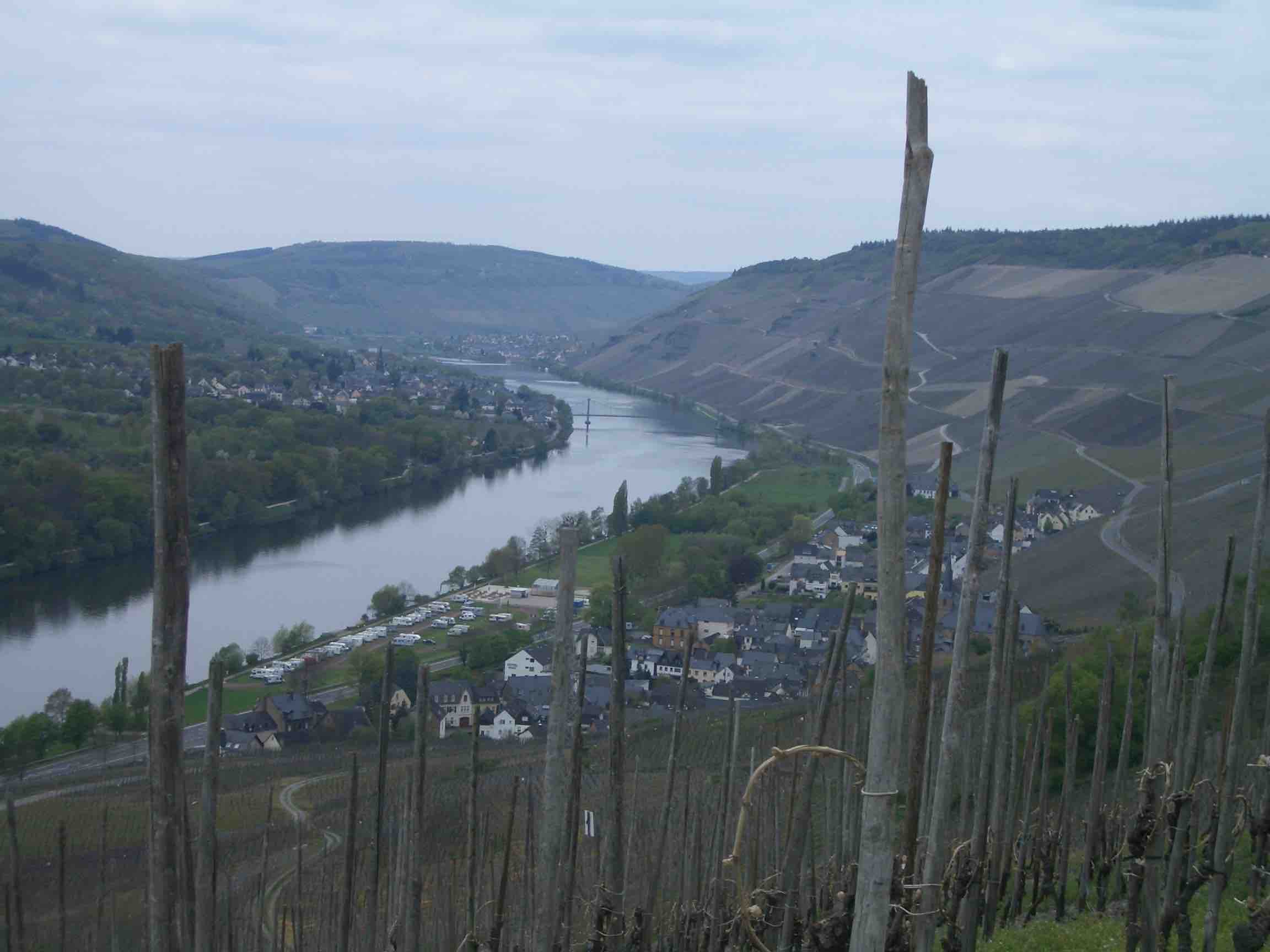![]()

There are probably very few wineries in Germany, which only own VDP classified Grosse Lagen. Gut Hermannsberg only has
At the end of our tasting, Hans had planned a 1998 Lorenzhöfer Riesling Auslese Lange Goldkapsel from the Karlsmühle winery, to which he served dark fleur de sel chocolate from the Confiserie Gmeiner. A very nice combination, as the chocolate harmonized very well with the salty minerality of the Auslese. According to the owner Peter Geiben, this is typical of his wines, which he ascribes delicate fruit, fresh acidity and a pronounced minerality. Wines are produced from dry … Read more ...
The Moselle wine-growing region has six viticultural subareas (Cochem Castle {Terrassenmosel}, Bernkastel {Middle Mosel}, Saar, Ruwer, Upper Moselle, Moseltor). With 5,685 hectares, the Middle Mosel is its largest wine-growing area and at the same time the heart of the Moselle cultivation area. Many well-known vineyard locations can be found along the approximately 100 kilometers of the river, their steep slopes mostly on Devonian slate, which can be gray, blue or red. The grapes for the 2003 Riesling Auslese Piesporter Goldtröpfchen from the Grans-Fassian winery grow on a gray-blue slate soil, interspersed with quartz and minerals
The Schäfer-Fröhlich winery has been family-owned for over 200 years and is still a business in which the whole family contributes their work. In addition to the two monopoly vineyardss Stromberg and Felseneck in Bockenau, the Monzinger vineyards Frühlingsplätzchen, Halenberg and Kupfergrube as well as the Schlossböckelheimer Felsenberg are managed.

My first encounter with the Jakob Schneider winery was enjoying its dry Riesling called Magnum. In consequence of this good experience I ordered a sample package of wine from the winery. The winery located on the wine growing region Nahe was founded in 1575 and has been family-owned ever since. Jakob Schneider Junior, who returned to his parents’ winery in 2007 after graduating from Geisenheim, is responsible for both the vineyard and the cellar work. Ten years later he was awarded Gault Millau as Aufsteiger des Jahres ( climber winemaker of the year) and currently has four Gault Millau grapes.
Martin always serves one Dönnhoff wine, and there were even two at the last invitation. Grilled tuna and monkfish were accompanied by a Riesling Tonschiefer 2018 and the Riesling Niederhäuser Herrmannshöhle Auslese Goldkapsel 2015 of the winery was an excellent match with Erika’s dessert, a vanilla cream with berries (blueberries, raspberries, strawberries).

Everyone has been talking about Kabinett in recent years, increasingly more so. This may be due above all to the fact that the mostly delicate, juicy wines show increasingly more character. Better sweet Kabinett wines from Riesling in particular show a perfect balance between fruit sweetness and high acidity. Even with Kabinett, which is the first tier in the series of top quality wines, grapes juice, must or sugar must not be added under any circumstances, like it is the case with all other types of German predicates wines. The minimum must weight for the Kabinett wines varies between 73 and 85 ° Oechsle depending on the wine-growing region and the grape variety, in the case of the tasted Mosel Riesling Kabinett 2018 from the winery Reichsgraf von Kesselstatt, it is 73 °.

Wines from the Karthäuserhof winery are easily recognizable by their bottle or by the label on the bottle neck. Albert Behler, the New York-based real estate tycoon, owner of the winery, which is now family-owned for over 200 years, says this a unique trademark. The winery was founded in 1335 by Carthusian monks and is located in Trier – Eitelsbach in the Ruwer valley. It works all 20 hectares of the VDP. Große Eitelsbacher Karthäuserhofberg. Mainly Riesling is planted on its devonian slate soil with clayey sprinkles and high mineral proportions.
![]()
 Hans had invited to taste sweet wines (Tasted Wines), most of them from Klaus Peter Keller. More information about Winery Keller.
Hans had invited to taste sweet wines (Tasted Wines), most of them from Klaus Peter Keller. More information about Winery Keller.
Scheurebe Spätlese 2010, Keller
Very round fragrance, orange, apricot, very nice balance of sweetness and acidity on the palate, spicy herbal notes, very harmonious, very good wine

The Weingut Keller is certainly one of the real famous wine addresses in Germany. Its clear, concentrated, very elegant, dry Rieslings Große Gewächse, described by the wine critic Jancis Robinson, as German Montrachets, are known far beyond the borders of Germany. These wines come from renowned vineyards such as Abtserde, Aulerde, Hubacker, Kirchspiel, Morstein or Pettenthal and Hipping from the Roten Hang.